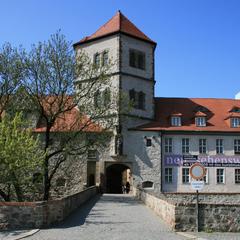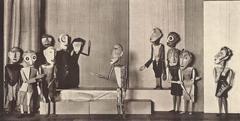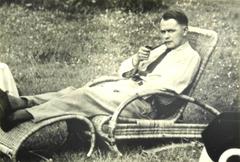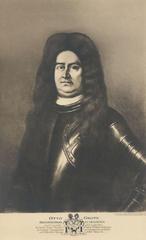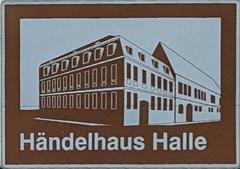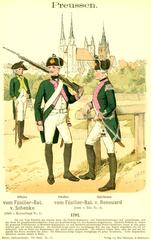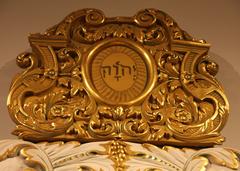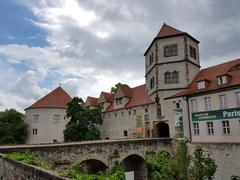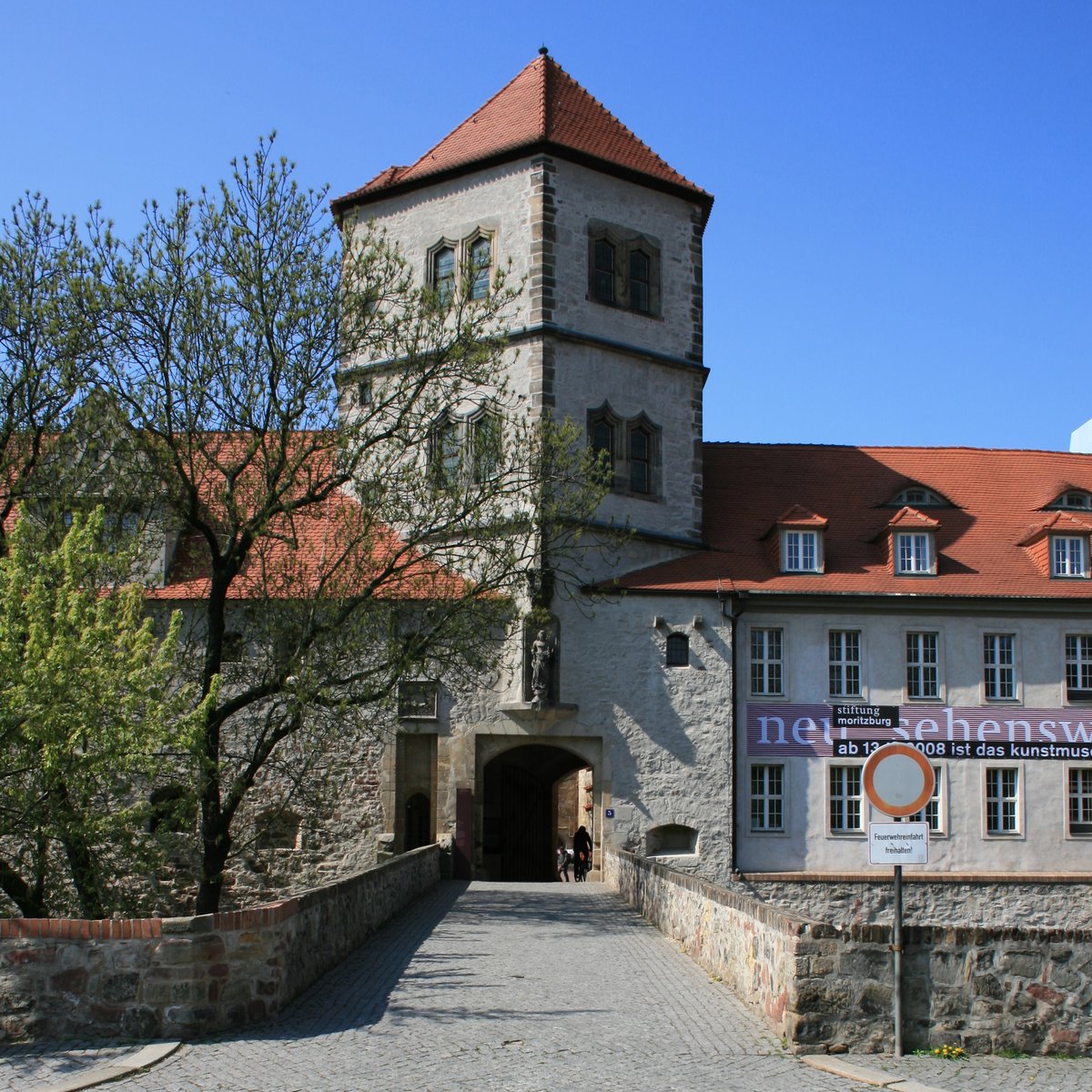
Moritzburg Halle, Germany: Visiting Hours, Tickets, and Attractions
Date: 14/06/2025
Introduction to Moritzburg in Halle: History and Significance
Moritzburg Castle stands at the heart of Halle (Saale), Germany, as a remarkable monument of architectural evolution and cultural significance. Founded in 1484 by Archbishop Ernest of Magdeburg as a fortified residence, Moritzburg embodies a unique fusion of late Gothic and early Renaissance styles. Over the centuries, the castle has survived wars, destruction, and periods of neglect, only to be revitalized as the home of the renowned Kunstmuseum Moritzburg Halle (Saale) (Wikipedia). This transformation from fortress to museum not only preserves the castle’s storied past but also positions it as a cornerstone of Halle’s vibrant cultural scene, offering visitors a compelling journey through art, history, and architecture.
Today, Moritzburg welcomes travelers with its impressive architecture, extensive art collections—from medieval masterpieces to modern German Expressionism—and engaging cultural programs. Its central location within Halle’s historic district makes it an ideal starting point for exploring nearby sites such as the Marktplatz, Handel House, and Bergzoo (Kunstmuseum Moritzburg). Seasonal exhibitions, like those commemorating the Peasants’ War, further enrich the visitor experience (simskultur.eu; werkleitz.de).
This guide covers everything you need to know for a rewarding visit: Moritzburg visiting hours, ticket options, accessibility, exhibition highlights, and practical travel tips. Whether you are an art lover, history enthusiast, or family traveler, Moritzburg Castle is a must-see destination in central Germany.
Contents
- Discover Moritzburg Castle: History and Architecture
- Transformation into Kunstmuseum Moritzburg Halle (Saale): Collections and Exhibitions
- Moritzburg Visiting Hours and Ticket Information
- Accessibility and Visitor Services
- Getting There and Nearby Attractions
- Practical Tips for Visiting
- Frequently Asked Questions (FAQ)
- Conclusion and Further Resources
- References
Discover Moritzburg Castle: A Jewel Among Halle’s Historical Sites
Origins and Early Construction
Moritzburg Castle was founded on May 25, 1484, by Archbishop Ernest of Magdeburg, serving as a fortified residence symbolizing both ecclesiastical and secular power (Wikipedia). Its strategic position along the Saale River and robust defensive features—including a moat, bastions, and four round corner towers—reflect its original military and administrative purposes. Notably, the Magdalenenkapelle (Mary-Magdalene Chapel) is among the earliest structures, contributing to the castle’s spiritual significance.
Architectural Evolution
Moritzburg’s architecture is a striking blend of late Gothic elements, such as pointed arches and ribbed vaults, with Renaissance features like symmetrical layouts and horizontal window bands (ArchDaily). Despite partial destruction during the Thirty Years’ War and later conflicts, the surviving towers and perimeter walls stand as testaments to its enduring resilience.
War, Decline, and Restoration
The castle suffered significant damage during the Thirty Years’ War and subsequent fires, leading to centuries of partial ruin (Wikipedia). After coming under Prussian control in the 17th century, Moritzburg served various military and civic functions. In 1897, the city of Halle acquired the property, initiating restoration and conversion into a museum, which opened in 1904 (Kunstmuseum Moritzburg). The 21st-century extension by Nieto Sobejano seamlessly integrates modern exhibition spaces within the historic fabric (ArchDaily).
Transformation into Kunstmuseum Moritzburg Halle (Saale)
Collections and Permanent Exhibitions
Moritzburg’s museum collections span from medieval ecclesiastical art to 20th-century German Expressionism and contemporary works (verliebtinhalle.de). Highlights include:
- Paintings and sculptures by artists such as Lyonel Feininger, Wassily Kandinsky, and Paul Klee
- Decorative arts, crafts, and design objects
- Regional art from Saxony-Anhalt and Central Germany
Thematic and chronological displays offer insight into the evolution of artistic expression in Germany (kunstmuseum-moritzburg.de).
Special Exhibitions and Cultural Programming
Moritzburg hosts dynamic temporary exhibitions and cultural events throughout the year. Notable 2024–2025 exhibitions include:
- Early Renaissance in Central Germany (Nov 2024–Mar 2025): Exploring art on the eve of the Reformation (simskultur.eu)
- Planetary Peasants (May–Sep 2025): International contemporary art on agricultural and social themes (werkleitz.de)
- Highlights of Modernism (Apr–Oct 2025): Masterpieces from the museum’s modern art collection
Educational programs, guided tours, and workshops engage visitors of all ages and backgrounds.
Moritzburg Visiting Hours and Ticket Information
Regular Opening Hours
- Tuesday–Sunday & Public Holidays: 10:00–18:00
- Closed: Mondays, December 24 & 31
- Last admission: 45 minutes before closing
- Always check the official website for up-to-date information.
Ticket Prices (as of June 2025)
- Special + Permanent Exhibition Ticket: €15 (€10 reduced)
- Day Ticket (Collection only): €5 (€3 reduced)
- Children under 18: Free
- Season Ticket (“Planetarische Bauern”): €35 (€25 reduced)
- Halle Card: Access to multiple museums, city tour, zoo, and public transport (verliebtinhalle.de)
Tickets are available online (German only) or at the museum ticket desk (Kunstmuseum Moritzburg: Your Visit).
Accessibility and Visitor Services
Moritzburg is fully wheelchair accessible, with elevators and stairlifts throughout the museum. Wheelchairs can be borrowed at the ticket desk, and the site is certified under Germany’s “Reisen für Alle” (Travel for All) initiative (Kunstmuseum Moritzburg: Barrier-free Access). Additional amenities include:
- Audio guides (multiple languages)
- Baby changing facilities
- Museum shop and café
- Cloakroom for coats and large bags
- No animals except service dogs
Guided tours are available for individuals, families, and groups, with customizable options (Kunstmuseum Moritzburg: Führungen).
Getting There and Nearby Attractions
Address
Friedemann-Bach-Platz 5, 06108 Halle (Saale), Germany
Transport
- By train: From Halle Hauptbahnhof, take tram line 7 (Kröllwitz) to Moritzburgring (Kunstmuseum Moritzburg: Your Visit).
- By car: 73 paid parking spaces at Friedemann-Bach-Platz, including accessible and coach parking.
Nearby Attractions
- Marktplatz Halle: Renaissance and Baroque market square
- Handel House: Birthplace museum of composer George Frideric Handel
- Francke Foundations: Historic educational complex
- Halle Zoo (Bergzoo): Unique mountain zoo
- Moritzkirche: Gothic church adjacent to the castle
For more on Halle’s cultural scene, see Top Museums in Halle.
Practical Tips for Visiting Moritzburg
- Plan for at least two hours to experience the castle, museum, and exhibitions.
- Weekday mornings are less crowded.
- Exhibit labels are in German—use audio guides for translations.
- Photography is allowed in select areas (ask staff for current rules).
- Combine your visit with nearby attractions or city tours for a full cultural experience.
- Check for seasonal exhibitions and closures on the official website.
Frequently Asked Questions (FAQ)
Q: What are Moritzburg’s visiting hours?
A: Tuesday–Sunday and public holidays, 10:00–18:00. Closed Mondays, December 24 & 31.
Q: How much are tickets?
A: €15 for special + permanent exhibitions, €5 for collection only; reduced rates available. Children under 18 are free.
Q: Are guided tours available?
A: Yes, in multiple languages. Book in advance for group tours.
Q: Is Moritzburg wheelchair accessible?
A: Fully accessible, with elevators and stairlifts.
Q: Can I take pictures inside?
A: Policies vary; ask staff before photographing exhibits.
Q: Are there amenities for families?
A: Yes, including baby changing facilities and family-friendly tours.
Conclusion: Plan Your Visit to Moritzburg Halle (Saale)
Moritzburg Castle is an essential destination for anyone interested in the intersection of medieval architecture, art, and contemporary culture. Its dynamic exhibitions, accessible facilities, and central location make it ideal for solo travelers, families, and groups alike. For the latest updates, ticket offers, and virtual tours, visit the Kunstmuseum Moritzburg official website and follow them on social media.
Download the Audiala app for digital guides and interactive experiences. Make the most of your journey by exploring related articles, such as Exploring Halle’s Historic City Center.
References
- Moritzburg (Halle) - Wikipedia
- Moritzburg Museum Extension - ArchDaily
- Moritzburg Art Museum Official Site
- Kunstmuseum Moritzburg Halle (Saale) Exhibitions - simskultur.eu
- Planetarische Bauern Exhibition - werkleitz.de
- Moritzburg Castle Official Site
- Revisiting History: Moritzburg Castle
- Wanderlog: Halle Itinerary
